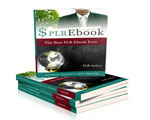 License Type: Resell Rights
License Type: Resell Rights  File Size: 475 KB
File Size: 475 KB File Type: ZIP
File Type: ZIP
 SKU: 16298
SKU: 16298  Shipping: Online Download
Shipping: Online Download
Ebook Sample Content Preview:
180. -- Clarifying Sugar
The clarifying and boiling of sugar to the different degrees must be considered as the key to all sorts of stove working, and I will give here the method used for clarifying sugar. The pan used must be perfectly clean and bright. Whisk two whites of eggs in one pint of water; break 30 lbs. of good lump sugar into small pieces and put it into the pan; pour over it 6 quarts of water, set it on a clear stove to melt, but be careful it does not blubber and boil before it is melted; when you see it rise it is then boiling, and must be stopped immediately by putting in 1 quart of water; when it rises again add the same quantity of water, and so on two or three times; this prevents the scum from boiling into the sugar and makes it rise to the top. Draw the pan to one side of the fire and take all the scum off; let it continue to simmer. Keep adding a little water to make the remaining part of the scum rise. By this time the scum will be very white and tough, which also take off if the sugar appear clear. Dip in your finger, and if a drop hang from it, it is of the first degree, called smooth, and may be put by for use. You may clarify a much smaller quantity of sugar by carefully attending to these instructions.
181. -- Testing Sugar
Granulated sugar is considered the best to use, as it is less liable to adulteration than any other kind. Of moist sugars, Demerara is the best. The simplest way to test sugar for its purity is to dissolve a little in a glass of clear water. If the sugar be quite pure the water will only be slightly thickened, but not in the least clouded, neither will there be any sediment. In keeping sugar care should be taken to protect it from dampness and vermin -- especially ants. To boil Sugar to the different degrees.
182. -- To the degree called "Pearled."
Cover your preserving pan bottom two or three inches deep, boil it briskly over a clear fire for a short time, then dip in your finger and put it to your thumb, if on separating them a small string of sugar adheres to each it is boiled to the degree called pearled.
183. -- To the degree called "Blown."
After you have ascertained that the sugar is boiled to the degree called pearled put in the skimmer and let it boil a few minutes, then shake it out of the sugar and give it a blow. If sugar fly from the skimmer in small bladders it is boiled to the degree called blown.
184. -- To the degree called "Feathered."
Continue to boil the sugar from blown for a short time longer; take out the skimmer and give it a jerk over the pan, then over your head, and if sugar fly out like feathers it is boiled to the degree called feathered.
185. - To the "Ball" Degree.
To know when the "ball" has been acquired, first dip your finger into a basin of cold water, then apply your finger to the syrup, taking up a little on the tip and dipping it into the water again; if upon rolling the sugar with the fingers and thumb you can make it into a small ball, that is what is termed the "small ball ;" when you can make a larger and harder ball, which you could not bite without its sticking unpleasantly to the teeth, you may be satisfied that is the "large ball."
186. -- To the degree called "Crackled."
Boil the sugar from the degree called feathered a little longer; dip a stick or a piece of pipe (or your finger, if you are used to boiling) into water, then into the sugar and again into the water. If it crack with the touch it is boiled to the degree called crackled.
187. -- To the degree called "Caramelled."
Boil the sugar still further, dip a stick or your finger into water, then into the sugar, and again into the water. If it snap like glass it is of the highest degree, called caramelled, and must be taken off the fire immediately, for fear of burning. This sugar is proper to caramel any sort of fruit.
188. -- To boil Sugar by the Thermometer
All the foregoing tests are according to the old style of boiling; but a boiling-glass can now be had which enables us to boil to a better degree of accuracy. Thus, to boil to the pearl is to boil to 220 degrees; the small thread 228 degrees; the large thread 236 degrees; the blow 240 degrees; the feather 242 degrees; the small ball 244 degrees; the large ball 250 degrees; the small crack 261 degrees; the hard crack 281 degrees; the caramel 360 degrees.








